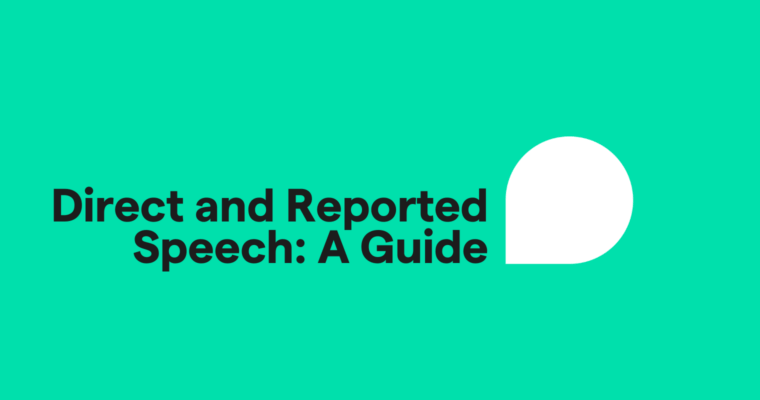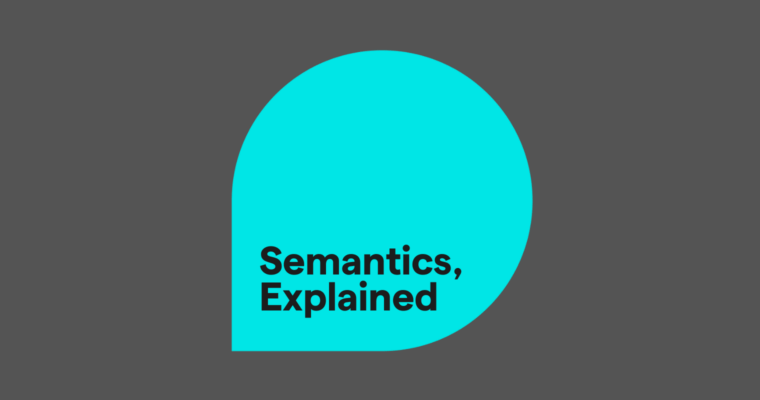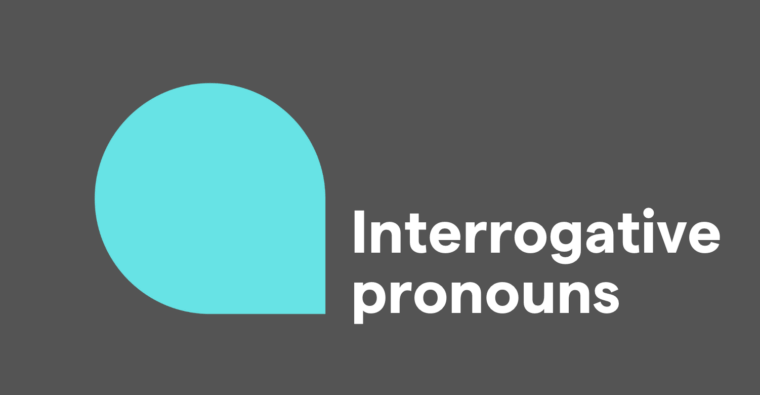
Infinitives are a special form of verbs that can be used as a noun, adjective, or adverb. They are usually made by adding the word to before the base verb, and they can be useful when discussing actions without actually doing the action, such as “I want to go home,” or “To err is human.”
The infinitive form is crucial to English and many other languages, but the grammar rules for infinitives can be tricky. In this guide, we explain all about the different types of infinitives and how to use them, including clear infinitive examples so you can see how they work.
What is an infinitive, and what is its function?
Infinitives are a form of verb that allow the word or a group of words to be used as a noun, adjective, or adverb. Every type of verb can be put into the infinitive form, even phrasal verbs.
Usually, infinitives are formed by adding the word to before the base form of the verb, as in to be, but sometimes the base form of the verb is used alone (we explain more in the next section).
The purpose of infinitives is to discuss an action in general instead of a specific instance of the action being done. For example, take a look at these two sentences:
I need to win.
Today, we win.
The first sentence uses the infinitive form of the verb win as a noun; the main verb of the sentence is actually “need.” The second sentence uses the standard form of win as an actionable verb. In the first sentence with the infinitive, the action of “winning” is not actually done; the sentence simply discusses the idea of winning. The second sentence, however, describes the action of winning.
What are the types of infinitives?
There are two main types of infinitives: full infinitives and bare infinitives. Below, we explain when and how to use each.
Full infinitives
Full infinitives, also known as to-infinitives, are the most common infinitives in writing. You can create a full infinitive by taking the base form of a verb and adding to in front of it. For example, the verb be—which is often conjugated to is, are, was, were, etc.—becomes the full infinitive to be, as in Shakespeare’s famous infinitive example from Hamlet:
To be or not to be . . .
Full infinitives are used in the following situations:
1 To show purpose or intention
Infinitives are used to explain why someone is doing something, often replacing the phrase “in order to.” In this case, they act as adverbs to describe the main verb.
Mom left to buy milk.
I’m writing this email to tell you something important.
Did you come to college to study or to party?
Unlike an adverbial clause, an infinitive phrase used as an adverb does not need an active verb.
2 To modify nouns
Just like how full infinitives can add extra information about verbs, they can also modify the meanings of nouns. In this case, they act as adjectives and adjective phrases.
We need a hero to save us.
Would you like something to drink?
It was a dumb thing to say, and I regret it.
3 As the subject of a sentence
If you want to talk about an action in general as the subject of the sentence, use the full infinitive form.
To love someone requires patience and understanding.
To go this late seems pointless.
To unlearn is the highest form of learning.
4 After adjectives
Full infinitives can add context or extra description when used after adjectives.
I’m happy to be here.
Isn’t it nice to leave the city?
Computers are easy to use with practice.
5 With the words too or enough
When using the adverbs too and enough, we use the full infinitive to explain why. In these cases, the infinitive is often unnecessary, but it’s nonetheless a helpful addition if the sentence is vague.
I have too many books to fit in my backpack.
We collected enough firewood to last the winter.
They were old enough to vote but not to drink.
6 Phrases with most relative pronouns
Use the full infinitive in phrases that start with one of the relative pronouns who, whom, what, where, when, and how—but not why.
I don’t understand how to beat the Level 5 boss.
Playing cards is about knowing when to hold them and when to fold them.
Here’s a list of whom to call in an emergency.
Keep in mind that you only use full infinitives when relative pronouns are used as phrases, but not typically when used for questions:
7 With certain verbs
Certain verbs always use the full infinitive if they’re followed by a verb form. These words can still be used without an infinitive at all—but if they use an infinitive, it should be the full infinitive.
- afford
- agree
- aim
- appear
- arrange
- attempt
- beg
- care
- choose
- claim
- condescend
- consent
- decide
- demand
- deserve
- determine
- endeavor
- expect
- fail
- forget
- guarantee
- happen (as an impersonal verb)
- have (as a main verb, not as an auxiliary verb)
- hesitate
- hope
- learn
- long (as a verb meaning “want”)
- manage
- mean
- need
- neglect
- offer
- plan
- prepare
- pretend
- proceed
- promise
- refuse
- resolve
- seem
- stop
- swear
- tend
- threaten
- trouble
- undertake
- used (as “used to . . .” for past habitual actions)
- volunteer
- vow
- want
- wish
Bare infinitives
Bare infinitives, also known as zero infinitives, are formed without to—you simply use the base form of a verb within a sentence. As you can imagine, this gets confusing, but thankfully bare infinitives are less common than full infinitives.
Bare infinitives are used in the following situations:
1 After modal verbs
When using an infinitive after modal verbs, you don’t need to include to. Common modal verbs include can, may, might, could, should, would, will, and must.
Iggy can do this all day.
We might be late tonight.
You must not mention politics when talking to my father.
2 After perception verbs
Perception verbs (see, hear, taste, feel, etc.) use bare infinitives when their object takes an action. In this case, the order is main verb → object → bare infinitive.
I heard the car arrive before I saw it.
They felt the ants crawl on their arm.
She watched the woman in the red dress walk across the dance floor.
These constructions are related to infinitive phrases, which we explain in detail in the final section.
3 With the verbs let, make, and do
Just like certain verbs always use the full infinitive, a few verbs always use the bare infinitive. These include the common verbs let, make, and do. Keep in mind the verbs let and make often use a direct object, which comes between them and the bare infinitive.
Let me work in peace!
He made him promise to behave.
I don’t drink coffee in the evening.
4 With the relative pronoun why
While the other relative pronouns use the full infinitive form, the word why uses the bare infinitive, especially when used to make suggestions in the form of a question.
Why wear a raincoat when it’s sunny outside?
Why not ask for directions?
Why bother?
How do you use an infinitive?
While we already covered the main uses for both infinitive forms, there is some infinitive grammar that we haven’t covered yet. Below, we explain three key areas for understanding infinitive grammar: split infinitives, passive infinitives, and continuous infinitives.
Split infinitives
A split infinitive is a full infinitive that contains an adverb or adverbial phrase between to and the base verb, such as to hungrily eat.
Split infinitives are a debated topic among grammatists, with some saying they should be avoided and others saying there’s nothing wrong with them. There’s no official answer on whether or not they’re correct.
In most cases, we recommend avoiding them when you can and using them only in some scenarios. In general, you can communicate more clearly when you keep related words next to each other, so if you can move the adverb after the infinitive and it still makes sense, that’s probably best.
This app helps you to quickly, easily, and conveniently work.
↓
This app helps you to work quickly, easily, and conveniently.
However, there are two main exceptions for when split infinitives are preferable. First is when the adverb doesn’t make much sense elsewhere.
They need to read carefully translated manuscripts.
In this sentence, it’s unclear whether “carefully” relates to “read” or “translated.” By splitting the infinitive, it becomes clear that “carefully” refers to “read.”
They need to carefully read translated manuscripts.
The second exception is for emphasis. Sometimes splitting the infinitive just sounds better than the alternative. Consider the famous opening to Star Trek:
To boldly go where no one has gone before . . .
It doesn’t sound as good without the split infinitive:
To go boldly where no one has gone before . . .
Passive infinitives
Like other verbs, infinitives can also be written in the passive voice. In the passive construction, the subject of the verb becomes the receiver of the action instead of the doer.
For passive infinitives, instead of the base verb use the word be + the past participle. For example, if you want to turn to do into a passive infinitive, use to be done. You can use passive infinitives with both full infinitives and bare infinitives.
I was hoping to be given an A on my paper.
She expected to be thrown the ball since she was open.
Both doors should be locked at night.
Continuous infinitives
Like verbs in the continuous tense, continuous infinitives represent an ongoing action. Instead of the base form of the verb, continuous infinitives use the word be + the present participle (the -ing form). For example, to make the infinitive to do into a continuous infinitive, use to be doing.
Just like passive infinitives, continuous infinitives can be used for both full infinitives and bare infinitives.
I’d prefer to be sleeping right now.
It would be a nightmare to be waiting outside in this storm.
You must be joking!
Infinitives vs. prepositional phrases
Because infinitives often use to, be careful confusing them with prepositional phrases. To is a common preposition, but its use in infinitives is different.
When to is used in prepositional phrases, it always takes a noun as an object.
We’re going to the pool tomorrow.
Roger confessed his love to the cashier.
When to is used in an infinitive, it’s followed by a verb. Even if the infinitive acts as a noun, it still contains the base form of a verb.
We want to swim tomorrow.
Roger tried to tell the cashier he loved her.
You can learn more about how to use to as a preposition in our previous guide on to vs. for.
Infinitives vs. gerunds
Infinitives aren’t the only verb form that can be used as a noun. A gerund is a verb in the present participle form that also acts as a noun. Although sometimes infinitives and gerunds are interchangeable, on a couple occasions only one is correct.
1 Only gerunds can be the object of prepositions.
2 Some transitive and ditransitive words only use infinitives.
Refer to the list in the previous section about full infinitives so see which verbs only work with infinitives.
What is an infinitive phrase?
Infinitives don’t have to stand alone. As you can tell by some of our infinitive examples above, infinitives can work with other words to form what’s called an infinitive phrase. To put it simply, infinitive phrases use additional words to modify or further describe the main infinitive.
The students wanted the teacher to cancel class.
In this infinitive example, the entire phrase “to cancel class” is an infinitive phrase that revolves around the infinitive “to cancel.” When dealing with infinitive phrases, the doer of the action (in this case, “the teacher”) is known as the actor.
My parents asked me to watch my sister.
In this example, the actor is “me.” Notice how when the actor is a pronoun it uses the objective case (me, not I). As you can see in this example, infinitive phrases can also take direct objects, such as “my sister.”
When using infinitive phrases, some verbs use actors and some don’t. For example, tell uses actors when it takes an infinitive phrase.
My boss told me to pay attention, but I wasn’t listening.
On the other hand, some verbs like begin do not use actors when they take an infinitive phrase.
We’re beginning to understand each other.
Moreover, some verbs use actors sometimes but not other times. For example, need can either use or not use actors.
I need to get out of here.
I need you to get me out of here.
It can get complicated, so here’s a quick list of all three types of verbs.
Verbs that use actors with infinitive phrases
- advise
- allow
- appoint
- convince
- encourage
- force
- hire
- implore
- incite
- instruct
- invite
- order
- permit
- remind
- teach
- tell
Verbs that do not use actors with infinitive phrases
- agree
- begin
- continue
- decide
- fail
- hesitate
- hope
- intend
- learn
- neglect
- offer
- plan
- prefer
- pretend
- promise
- refuse
- remember
- start
- try
Verbs that may or may not use actors with infinitive phrases
- ask
- expect
- like
- want
- need
Infinitives FAQs
What is an infinitive?
An infinitive is a form of a verb that can be used as a noun, adjective, or adverb. They’re often formed by the base verb with the word to added in front.
How do infinitives work in language?
Although the root form of an infinitive comes from a verb, within a sentence infinitives can function as a noun, adjective, or adverb. They come in handy when you want to discuss an action in general instead of a specific occurrence.
Are there different types of infinitives?
There are two main types of infinitives. First is full infinitives, also known as to-infinitives, which use the word to before the base form of a verb. Second is bare infinitives, also known as zero infinitives, which use only the base form of a verb without to.
What is an example of an infinitive?
Shakespeare’s famous quote from Hamlet, “To be or not to be,” uses the infinitive to be to represent the entirety of existence.





